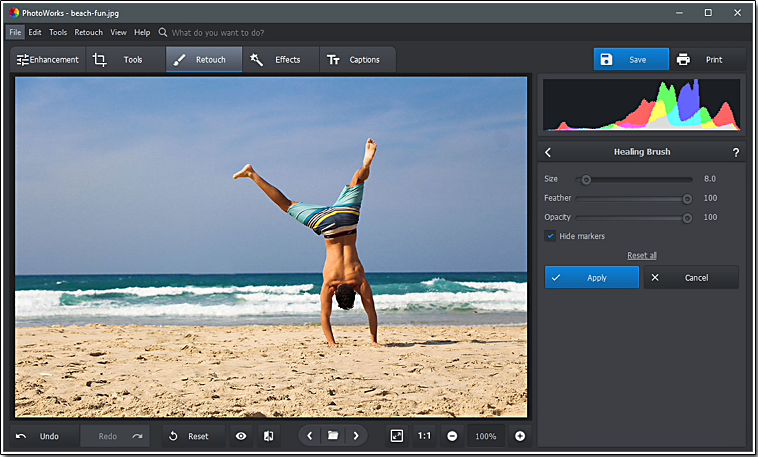
The program allows you to create, edit and share 3D images. If you want to understand 3D modeling, start from Microsoft Paint 3D. That's why we have made this list of Microsoft Paint alternatives. If you work with pictures often, you may need a more powerful tool to manage and edit. Microsoft Paint has poor possibilities as an image editor. You can paste, crop and make some marks on the image via Microsoft Paint, make drawings with brushes and pencil tools. Microsoft Paint especially comes in handy when you need to make a good looking screenshot fast. An important feature of FSR is the fact that the calculations are carried out in the Fourier domain, which leads to fast implementation.Microsoft Paint is a simple graphic editor that allows you to open and save, view and process pictures in main image formats as JPEG, GIF, PNG, TIFF. This algorithm iteratively generates a generic complex-valued model of the signal to be extrapolated as a weighted superposition of Fourier basis functions. The signal of a distorted block is extrapolated using known samples and already reconstructed pixels as support. Rapid Frequency Selective Reconstruction Algorithm Once they are obtained, color is filled to reduce minimum variance in that area. For this, some methods from fluid dynamics are used. It continues isophotes (lines joining points with same intensity, just like contours joins points with same elevation) while matching gradient vectors at the boundary of the inpainting region. It first travels along the edges from known regions to unknown regions (because edges are meant to be continuous). This algorithm is based on fluid dynamics and utilizes partial differential equations. in their paper, “ Navier-Stokes, Fluid Dynamics, and Image and Video Inpainting” introduced way back in 2001.
#Inpaint alternative manual#
FMM ensures those pixels near the known pixels are inpainted first, so that it just works like a manual heuristic operation. Once a pixel is inpainted, it moves to next nearest pixel using Fast Marching Method. More weightage is given to those pixels lying near to the point, near to the normal of the boundary and those lying on the boundary contours. Selection of the weights is an important matter. This pixel is replaced by normalized weighted sum of all the known pixels in the neighbourhood. It takes a small neighbourhood around the pixel on the neighbourhood to be inpainted. Algorithm starts from the boundary of this region and goes inside the region gradually filling everything in the boundary first. A good overview is provided of this is provided on the OpenCV documentation which I have quoted here.Ĭonsider a region in the image to be inpainted. This technique was introduced by Alexandru Telea in his paper, “ An Image Inpainting Technique Based on the Fast Marching Method” in 2004. The results of all four methods are shown below. I used three images with a size of 756x1008. #mask: Black mask with white pixels to be inpainted res_NS = cv2.inpaint(distort_img, mask, 3, cv2.INPAINT_NS) res_TELEA = cv2.inpaint(distort_img, mask, 3, cv2.INPAINT_TELEA) res_FSRFAST = distorted_img.copy() res_FSRBEST = distorted_img.copy() mask1 = cv2.bitwise_not(mask) (distort, mask1, res_FSRFAST, _FSR_FAST) (distort, mask1, res_FSTBEST, _FSR_BEST) Results
#Inpaint alternative code#
The single lines of code required for image inpainting are: import cv2 #distorted_img: The image on which inpainting has to be done. For Navier-Stokes and Telea methods, the white part on the mask represents the area to be inpainted on, and for the FSR method, the black pixels are then ones which are inpainted on.


We need the distorted image and the mask where the inpainting has to happen.
#Inpaint alternative install#
OpenCV Contrib is required for two of those methods so that can be installed using pip: pip install opencv-contrib-python=4.3.0.36 Code We will be using three algorithms namely, Navier-Stokes based, a method by Alexandru Telea based on the Fast Marching method, and a fast and best iteration of Rapid Frequency Selective Reconstruction algorithm. present the code and results first followed by the description of the method. Moreover, I will be following a different approach in this article, i.e. In this article, we will be implementing four different types of image inpainting methods and comparing their results based on PSNR and SSIM. In contrast to this, image inpainting can also be done via image processing operations, that too with just a single line of code using OpenCV. Then also the model might suffer if the data presented is completely different. The state of the art methods of image inpainting is performed using GANs where complex models are trained on large amounts of data. Inpainting is a process where the damaged or missing parts of artwork is filled to complete it.


 0 kommentar(er)
0 kommentar(er)
